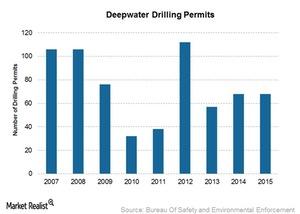The 2010 Gulf Oil Spill Tragedy and Its Aftermath across the Industry
The marine oil spill in April 2010 was the worst environmental disaster in US history, causing millions of barrels of oil gushed into the Gulf.
Nov. 20 2020, Updated 4:53 p.m. ET

A risky industry
Offshore drilling is risky because it is prone to accidents like massive marine oil spills and fire. As of the beginning of 2016, many such incidents have already taken place, but one particularly big accident has left the greatest scars.
The 2010 Gulf oil spill
The largest marine oil spill caused in April 2010 was the worst environmental disaster in US history. In a nutshell, when the seal of a major oil well in the Gulf of Mexico failed, millions of barrels of oil gushed freely into the water, and for 87 consecutive days, oil and methane gas were emitted from an uncapped wellhead.
The United States federal government has estimated that 4.2 million barrels of oil poured into the Gulf from a single well. Many rig workers lost their lives, and 16,000 miles of coastline along the Gulf were affected, not to mention sea life—birds, fish, shellfish, turtles. BP (BP) was the oil company running the rig, while Halliburton (HAL) and Transocean (RIG) owned of the rig itself.
This incident weighed negatively on the stock prices of offshore drillers such as Diamond Offshore (DO), Noble Corporation (NE), Seadrill (SDRL), Rowan Companies (RDC), and Atwood Oceanics (ATW). The performances of the oil-specific ETFs XLE and OIH were seriously hampered by the spill.
Blowback for the offshore industry
In 2016, the offshore oil industry is still facing tougher rules and regulations due to the 2010 Gulf oil spill. These include new standards for well designs, casing and cementing wells, equipment inspections and verifications, blowout preventers, drilling equipment, well control systems, life-saving measures, and safety controls.
After the oil spill tragedy, the issuance of new drilling permits slowed down, and permitting requirements increased. The number of deepwater drilling permits in 2009 before the oil spill tragedy equaled 76, but this dropped to 32 in 2010. Then in 2012, as oil prices revived, the US government issued the most deepwater oil-drilling permits for the Gulf of Mexico that it had since 2007. But since 2012, the number of permits has dropped back below the pre-2010 levels.
The adverse effect on exploration and expansion
The 2010 Gulf spill has adversely affected the exploration and expansion programs of many oil companies operating in the deep waters of the Gulf of Mexico, including Exxon Mobil (XOM), BP (BP), and Royal Dutch Shell (RDS). For example, the time required to process an offshore drilling permit for the region substantially increased after the accident, though this time wait has come down slowly again over time.
Additionally, the disaster is still fresh in everyone’s mind, and new regulations are still begin announced. In 2015, for example, federal regulators proposed new rules requiring improvements to blowout preventers and other key control functions. According to the director of the Bureau of Safety and Environmental Enforcement, with these newly implemented rules, additional approximate costs for the whole industry will likely be around $883 million over ten years. These costs will be mostly for refitting and updating blowout preventers and installing real-time monitoring of offshore operations from shore.
Continue to the next part for a discussion of the different types of offshore rigs and what they’re used for.
